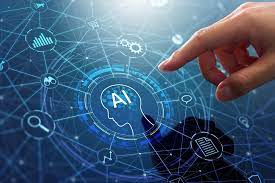Sustainable & Green IT: Energy-Efficient Data Centers, Low-Power Chips, and Circular Tech sits at the intersection of engineering, operations, and corporate responsibility, and it is finally shifting from buzzword to boardroom priority. In this article I’ll walk through the tangible strategies that reduce power draw, lower emissions, and extend the life of hardware—while keeping applications fast and resilient. Expect technical detail, real-world examples, and an action-oriented roadmap you can apply whether you manage a cloud estate, run a campus data center, or design embedded devices.
- Why green IT matters now
- Designing energy-efficient data centers
- Cooling innovations and site strategy
- Table: cooling methods at a glance
- Power sourcing: renewables and grid-aware operations
- The rise of low-power chips and hardware specialization
- Edge computing and distributed efficiency
- Circular tech: design for reuse, repair, and recycling
- Practical reuse strategies
- Operational best practices and software optimizations
- Measuring impact: metrics that matter
- Policy, procurement, and organizational change
- Actionable roadmap for IT leaders
- Real-world examples and lessons learned
Why green IT matters now
The scale of modern computing is staggering: billions of devices and sprawling data centers power our daily lives, and that growth translates directly into energy demand and material consumption. Companies face not only regulatory and investor pressure to disclose and reduce emissions, but real cost risk from rising electricity prices and constrained supply chains.
Beyond compliance, sustainable IT is an opportunity: more efficient systems save money, enable denser computing without overheating, and reduce exposure to carbon pricing and grid instability. Organizations that treat sustainability as a design constraint often unlock performance and reliability gains as a side effect.
Designing energy-efficient data centers
Data centers remain the anchor point for large-scale energy consumption, so optimizing their design and operations yields the biggest wins. Key levers include efficient power distribution, modern cooling architectures, and intelligent workload placement that matches compute demand to the cleanest available energy.
Begin with the basics: reduce losses between the grid and racks, consolidate underutilized servers, and move from legacy UPS configurations to highly efficient modern systems. These steps lower the measurable metric known as power usage effectiveness (PUE), but the deeper goal is reducing real energy consumption, not just improving ratios.
Cooling innovations and site strategy
Cooling accounts for a substantial slice of a data center’s electricity bill, and the conventional approach of over-cooling with chilled water is being replaced by smarter, lower-energy alternatives. Air-side economization, direct-to-chip liquid cooling, and immersion cooling each offer useful trade-offs depending on density and climatic context.
Siting matters: colocating facilities in cooler climates or near renewable generation reduces both cooling demand and carbon intensity. Some operators take advantage of waste heat by selling it to district heating systems or nearby industrial users, converting what was once an expense into a local value stream.
Table: cooling methods at a glance
| Method | Typical PUE improvement | Best use case |
|---|---|---|
| Air-side economization | Moderate | Cool climates, low to moderate density racks |
| Direct-to-chip liquid cooling | High | High-density servers, HPC, AI clusters |
| Immersion cooling | Very high | Extreme density setups and specialized workloads |
Power sourcing: renewables and grid-aware operations
Switching a data center to run on renewable energy is rarely a single flip of a switch; it’s a layered strategy that can include on-site generation, long-term purchase agreements, and hourly matching of consumption to renewable availability. The most effective programs combine contracts with smart controls that shift non-urgent workloads to periods of low carbon intensity.
Demand response and grid services are emerging revenue streams for hyperscalers and large enterprises, where flexible workloads provide stability to the electrical grid while generating income that offsets operating costs. Time-shifted processing—batch jobs, backups, and analytics—can be scheduled to when renewable output peaks, reducing both emissions and energy bills.
The rise of low-power chips and hardware specialization
Chip design is moving in two complementary directions: greater specialization for machine learning and streaming workloads, and architectural shifts toward low-power cores for general compute. Arm-based servers, RISC-V experimentation, and domain-specific accelerators all prioritize performance per watt over raw clock speed.
Hardware-software co-design matters more than ever. Software that understands the heterogeneity of modern servers—placing workloads on the right mix of big cores, small cores, or accelerators—can dramatically improve energy efficiency without sacrificing throughput. Developers should expect to think about power as a first-class constraint when optimizing code.
Edge computing and distributed efficiency
Edge deployments reduce latency and bandwidth by processing data closer to its source, and they also offer sustainability benefits when they consolidate local workloads and reduce long-haul transport. Small, low-power edge devices running optimized models can prevent thousands of round trips to centralized data centers, saving energy at scale.
That said, managing many distributed nodes introduces maintenance and lifecycle challenges. The green advantage comes only when edge hardware is designed for efficiency, remote management, and long service life; otherwise the material and logistical costs can outweigh operational savings.
Circular tech: design for reuse, repair, and recycling
Treating hardware as a resource that should be kept in use as long as possible is central to circular tech. Designing devices and servers for modular repair, using standardized components, and establishing robust refurbishment channels reduce demand for virgin materials and lower the environmental footprint of IT estates.
Procurement policies that prioritize refurbished equipment and that hold vendors accountable for take-back or recycling programs change the economic calculus. In my work advising a mid-sized software company, negotiating an extended warranty and refurbishment agreement with a supplier reduced fleet refresh costs by 30 percent and delayed new purchases by two years, with measurable emissions reductions.
Practical reuse strategies
Deploying a tiered hardware lifecycle—active service, secondary roles (e.g., dev/test, CDN edge), and then refurbishment or recycle—extends the usefulness of components and captures residual value. Tracking and inventory systems are essential to prevent premature disposal and to ensure components are matched to appropriate workloads.
Software-defined abstractions make reuse easier: containerization, virtualization, and infrastructure-as-code decouple applications from specific hardware, so slightly older or lower-performance machines can still be productive in non-critical roles. That flexibility multiplies the benefits of circular procurement.
Operational best practices and software optimizations
Optimizing software and operations often yields faster returns than hardware swaps. Simple measures—right-sizing VMs, eliminating zombie instances, and adopting autoscaling—can cut unnecessary compute by double-digit percentages almost immediately. These are low-hanging fruit that frequently go overlooked because teams prioritize feature delivery over housekeeping.
Beyond housekeeping, developers should consider algorithmic efficiency: fewer CPU cycles, reduced memory churn, and batch processing reduce energy per request. Observability tools that report power and energy per transaction allow teams to see the real cost of code and make energy-aware tradeoffs during design reviews.
Measuring impact: metrics that matter
PUE remains a useful engineering metric, but it can be gamed and shouldn’t be the sole target. Complementary indicators such as carbon usage effectiveness (CUE), compute efficiency per kilowatt-hour, and material circularity metrics give a fuller picture of environmental performance. Tracking both energy and materials closes the loop on sustainability.
Accurate measurement requires investment in metering and telemetry. Where direct metering is impractical, reasonable modeling combined with periodic audits provides a defensible baseline for improvement projects and reporting. Transparent measurement builds trust with stakeholders and uncovers the biggest opportunities for change.
Policy, procurement, and organizational change
Technical fixes only scale when reinforced by procurement rules, incentives, and clear corporate goals. Require lifecycle commitments from vendors, specify energy efficiency in RFPs, and tie sustainability metrics into procurement scorecards. These levers realign market incentives and stimulate suppliers to innovate.
Internal change management matters, too: empower cross-functional teams that bring operations, dev, procurement, and sustainability together. In one organization I worked with, a small cross-disciplinary “green ops” team cut energy use by coordinating maintenance windows, shifting workloads, and enforcing decommissioning policies.
Actionable roadmap for IT leaders
Start with a measurement sprint: meter power where you can, inventory hardware, and model areas you can improve quickly. Use that data to produce a prioritized plan that balances cost, carbon, and risk. Early wins build momentum for larger investments like cooling retrofits or chip refresh cycles.
Implement low-effort operational practices—zombie cleanup, autoscaling, scheduled batch windows—while parallel work evaluates site-level changes like renewables procurement or immersion cooling. Finally, update procurement to require circularity and energy performance, and make sustainability a KPI for teams that influence the estate.
- Measure energy and inventory assets.
- Eliminate wasteful compute and right-size resources.
- Optimize workloads for clean energy windows.
- Adopt low-power hardware and specialized accelerators where appropriate.
- Require refurbishment, take-back, and modular design in contracts.
Real-world examples and lessons learned
Large cloud providers have led in many areas: creating open-source tools for carbon-aware scheduling, signing long-term renewable contracts, and investing in liquid cooling for AI clusters. These efforts demonstrate that ambitious targets are technically feasible when aligned with business incentives.
At a smaller scale, a regional university I advised consolidated aging lab servers into a shared, efficiently cooled facility and swapped out 20 percent of workloads to low-power ARM nodes; the result was lower power bills, quieter racks, and longer equipment life. The lesson is that scale helps, but smart local projects matter too.
Moving IT to a more sustainable footing is a mix of engineering, procurement, and culture. Whether through smarter data center design, chip-level energy savings, or a commitment to circularity, each step reduces cost and environmental impact while often improving resilience and performance. If you want more practical guides and case studies, visit https://themors.com/ and read other materials from our website to continue the journey toward greener computing.









